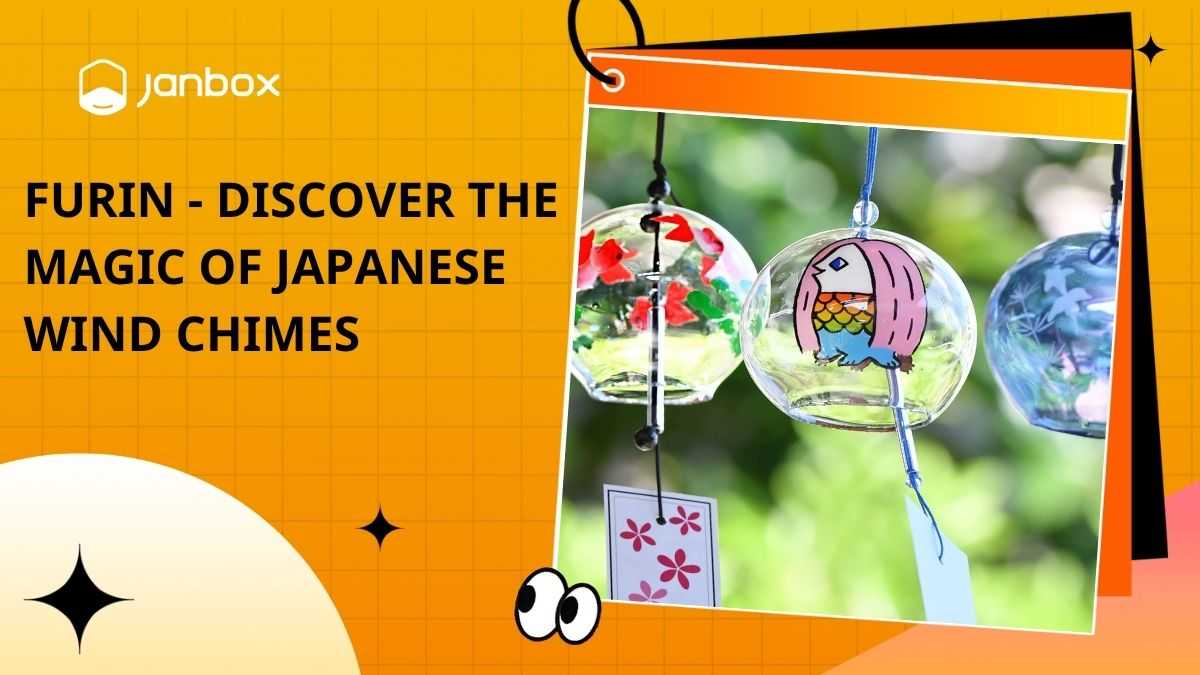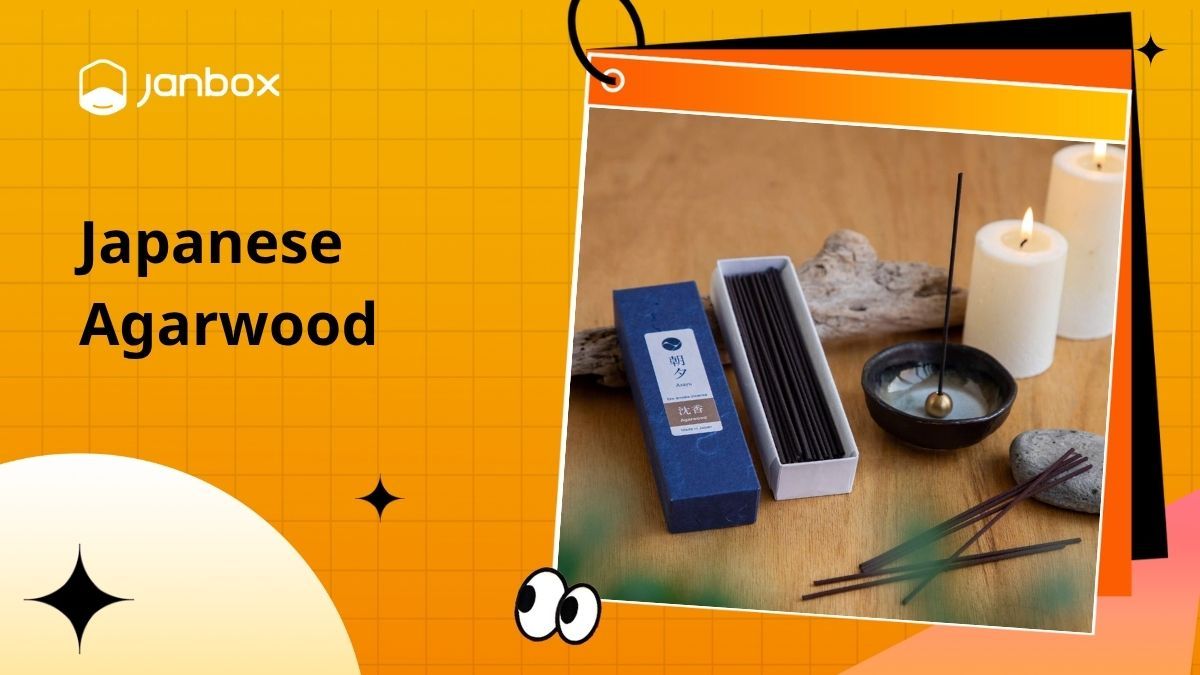Furin, the traditional Japanese wind chime, is a beloved symbol of summer and serenity in Japanese culture. Known for its delicate sound and artistic design, this charming object isn’t just a decoration, it represents harmony, mindfulness, and a deep connection with nature. In this article, we’ll explore everything about it: from cultural origins and traditional craftsmanship to placement tips and popular types. Whether you’re a Japan enthusiast or simply seeking peace through sound, let its soft chime bring a sense of calm and seasonal beauty into your space.
1. What is a Japanese Wind Chime (Furin)?
In Japanese, the word “furin” (風鈴) is made up of two kanji: fu (風) meaning “wind” and rin (鈴) meaning “bell.” Together, they refer to the iconic Japanese wind chime that produces soft, tinkling sounds in the breeze. The furin wind chime is most commonly seen during Japan’s hot summer months, often hung on windows, balconies, and porches to invite a sense of coolness and calm.
Traditionally made from glass, metal, or ceramic, a furin bell is designed to emit distinct tones depending on its material and craftsmanship. Beyond its pleasant sound, the furin wind bell holds deep cultural significance. In Japanese culture, it symbolizes purity, peace, and protection against negative energy. It’s not just a decorative object, but a spiritual charm that connects people with nature and seasonal rhythms.
You may also come across other terms like furin chime, japanese furin bell, or simply furin when exploring Japanese home decor or cultural souvenirs. Regardless of the name, its gentle melody and beautiful craftsmanship continue to capture the hearts of locals and international admirers alike. Whether used as a Feng Shui item or a summer accent, the furin wind chime remains a timeless symbol of tranquility and tradition in Japanese life.
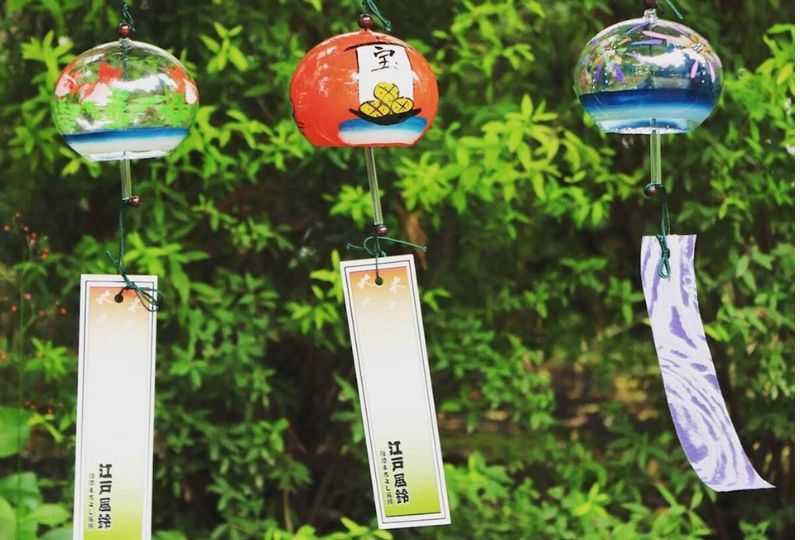
2. The History of Japanese Wind Chimes
The origins of Japan furin can be traced back to ancient China, where bronze “Futaku” bells were used in temples to predict the wind’s direction and ward off evil spirits. These bells were introduced to Japan during the Nara and Heian periods, gradually evolving into what we now know as furin wind chimes. While the Chinese versions had strong spiritual and weather-related functions, the Japanese adapted them into more decorative and symbolic objects.
During the Heian era, wind chimes began appearing at shrines and Buddhist temples across Japan. The gentle sound of the furin bell was believed to purify the environment, calm the soul, and invite good fortune. By the Edo period (1603–1868), furin wind chimes became increasingly popular among common households. Artisans in Edo (modern-day Tokyo) developed glass-blown techniques, giving rise to the famous Edo furin, with hand-painted designs and distinct, high-pitched tones.
Over time, furin chimes transformed from sacred temple items to cherished summer ornaments found in homes, gardens, and festivals. Today, they are widely recognized as both seasonal icons and spiritual symbols, especially during Japan’s hot summers. The peaceful tinkle of a japanese furin bell not only cools the senses but also serves as a nostalgic reminder of tradition, nature, and serenity in everyday life.
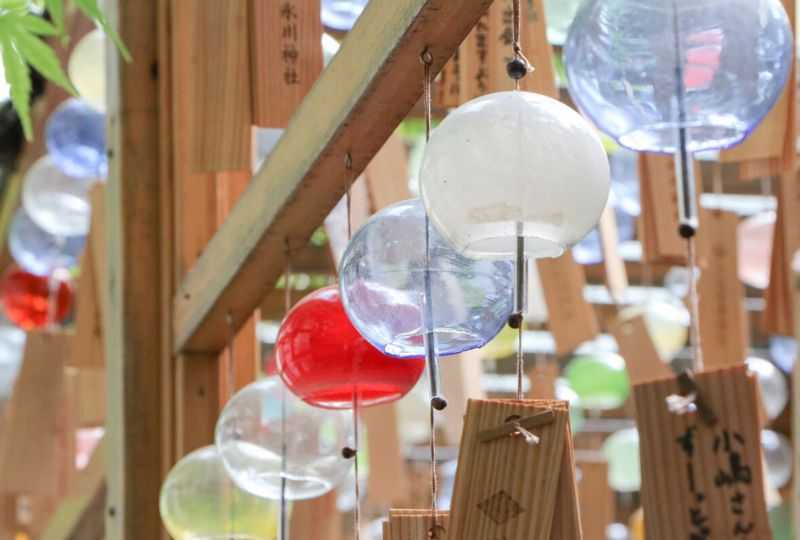
3. How are Japanese Wind Chimes Made?
The creation of a furin wind bell is a blend of craftsmanship, tradition, and regional artistry. Depending on the material, Japanese wind chimes can be made from glass, ceramic, iron or bronze each producing a distinct tone and visual appeal.
One of the most famous types is the Edo-style glass furin, handcrafted using traditional glass-blowing techniques. Artisans shape the glass by hand, then paint delicate designs on the inner surface to preserve the color against the elements. These paintings often include seasonal motifs like goldfish, fireworks, or cherry blossoms making each furin bell a miniature work of art.
In contrast, ceramic furin wind chimes offer a more earthy, muted sound, while iron or bronze furin bells produce deeper, longer-lasting tones that are often used in temples or traditional gardens. Regions like Iwate (famous for Nambu ironware) and Takaoka (known for bronze casting) have developed their own distinctive styles of furin japanese wind chimes over centuries.
Each region’s style reflects not only material differences but also cultural and acoustic preferences. Whether it’s the crisp clarity of Edo glass or the resonant chime of a bronze bell, every furin wind chime is carefully made to evoke calm, connect with nature, and bring seasonal beauty into everyday life.
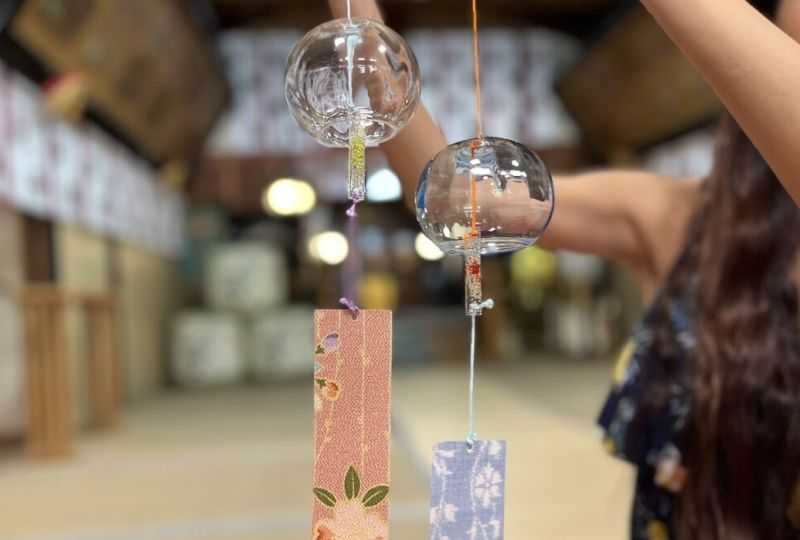
>>> Read more: Top 30 Best Japanese Souvenirs To Buy In Japan Take Home
4. How to Use Japanese Wind Chimes
Using a Japanese wind chime isn’t just about decoration it’s about creating a harmonious and peaceful space. Traditionally, people hang furin chimes on the eaves of houses, balconies, porches, or near open windows where they can catch the summer breeze. The best sound and energy come when the furin wind bell gently sways with natural wind, producing a calming tinkle that feels both refreshing and meditative.
In Japan, the furin chime plays a central role in summer traditions. Its soft, ringing tone is believed to evoke a psychological sense of coolness, making the hot season feel more bearable. During summer festivals (matsuri), stalls selling colorful furin bells are a common sight, and the chimes themselves often symbolize fleeting beauty and seasonal joy.
From a feng shui perspective, placing a furin wind chime in the east or southeast areas of the home is thought to attract harmony, dispel negativity, and encourage the flow of good energy. More than just a sound, the furin wind chime meaning in daily life ties closely to spiritual peace, nostalgia, and emotional comfort. Whether you use one to elevate your mood, enhance your space, or reconnect with nature, a Japanese furin bell is a timeless piece that enriches both home and heart.
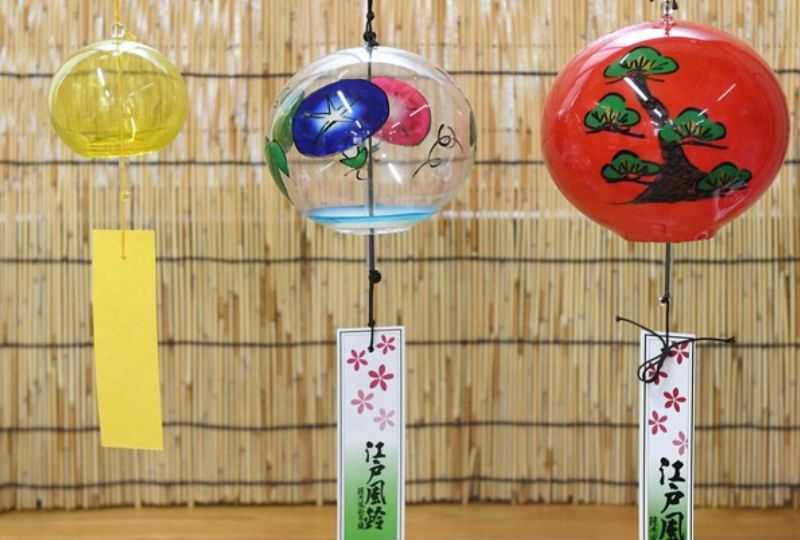
5. What Types of Japanese Wind Chimes Are There?
Japanese wind chimes come in many beautiful forms, each with its own regional style, material, and acoustic charm. Among the most popular is the Edo Furin, a delicate glass wind chime known for its bright, clear sound and hand-painted inner designs. Originating in Tokyo, these furin are often decorated with summer motifs like fireworks or goldfish, making them a favorite seasonal ornament.
For those who appreciate deeper, more resonant tones, the Nambu Furin from Iwate Prefecture is an excellent choice. Made from cast iron, these wind chimes are heavier, creating a calming, lingering sound that evokes strength and serenity.
Another iconic type is the Takaoka Furin, crafted from bronze in Toyama Prefecture. These chimes often feature intricate patterns and traditional Japanese engravings, making them as much a decorative object as a spiritual one.
If you prefer a more rustic, organic aesthetic, the Yakimono ceramic furin is ideal. These ceramic wind chimes offer a soft, earthy tone and often come in simple, handcrafted shapes that blend seamlessly with natural surroundings.
Each furin wind chime carries its own symbolism—from purity and protection to nostalgia and seasonal joy while offering a unique combination of sound, artistry, and spiritual meaning. Choosing a furin is as much about how it looks as how it makes you feel.
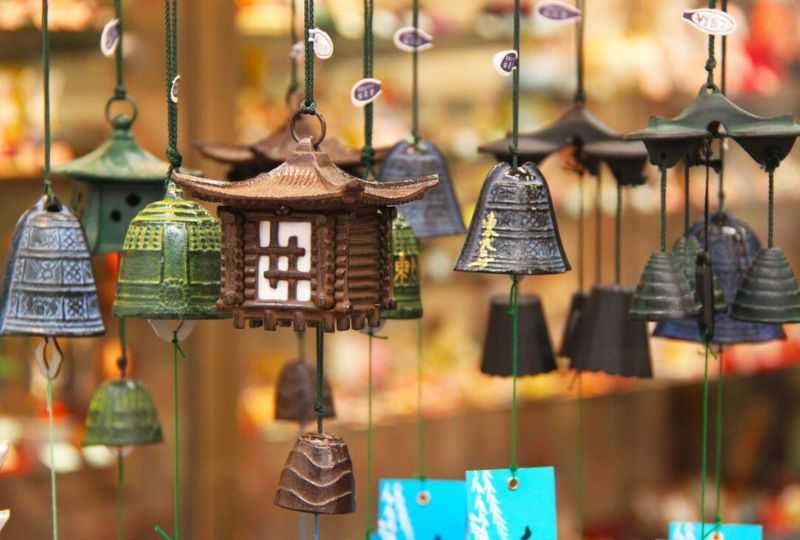
6. Where to Buy Authentic Wind Chimes?
If you’re looking to own a genuine Japan furin, shopping online is one of the most convenient and reliable options especially when you don’t live in Japan. Many traditional furin wind chimes are handcrafted in limited quantities and sold locally through regional shops or during seasonal festivals. That’s where Janbox.com becomes a valuable tool for international shoppers.
Janbox is a trusted Japanese proxy shopping platform that allows you to purchase directly from popular domestic sites like Rakuten, Yahoo Auction Japan and Mercari With Janbox, you gain access to rare, hand-painted, and even antique Japanese wind chimes that are often not listed on global marketplaces.
To find the perfect furin, try searching with terms like “Edo Furin,” “hand-painted furin,” or “seasonal summer wind bell.” Look out for seller ratings and request photo confirmation through Janbox’s warehouse service for added assurance of authenticity.
And why stop at wind chimes? You can also explore other traditional Japanese collectibles such as Kokeshi Dolls: Unveiling the Charm of Japan’s Traditional Wooden Dolls – another timeless symbol of Japanese artistry and culture. Whether you’re decorating your home or buying a thoughtful gift, Janbox helps you bring a piece of Japan right to your doorstep.
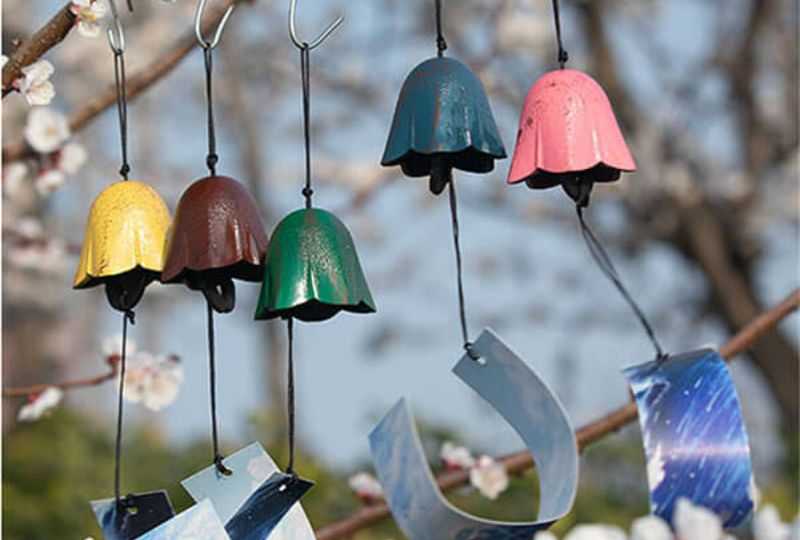
Whether hung by your window, on your porch, or in your workspace, this traditional wind chime brings more than just a beautiful sound, it carries the essence of Japanese heritage and summer calm. From the clear tones of Edo glass to the earthy charm of ceramic designs, each piece offers a unique harmony of sound, craftsmanship, and symbolism. If you’re looking to add a peaceful, cultural accent to your space or gift someone a meaningful reminder of Japan, this timeless creation is a perfect choice.
>>> Read more: How To Buy From Yahoo Auctions Japan? – Janbox Japanese Proxy Service
Want to bring a Japanese Furin home? Explore a wide selection of authentic designs at Janbox.com and let the spirit of Japanese summer ring softly in your life.
Website: https://us.janbox.com
Email: [email protected]

